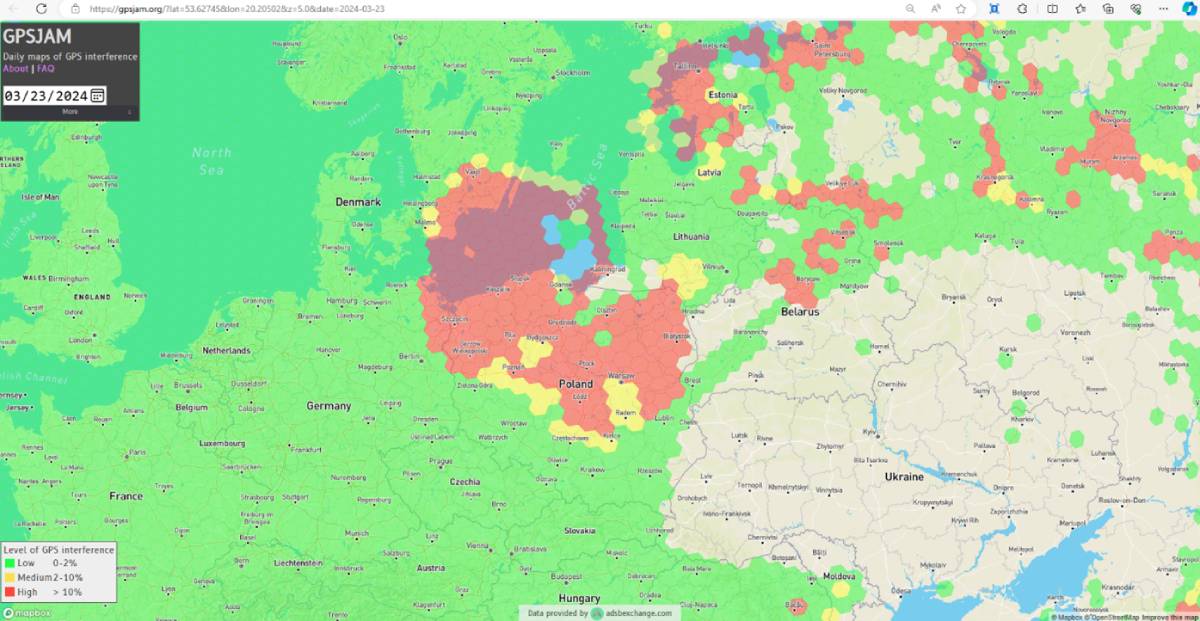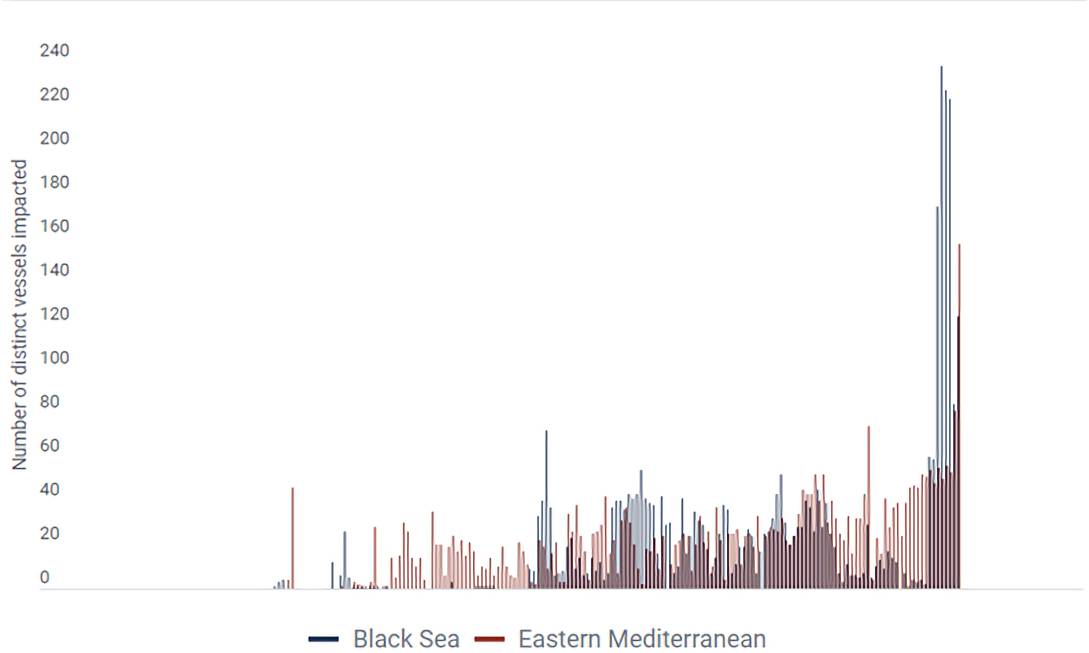
Executive Summary:
Jamming attacks have quickly become a prevalent threat to space systems, affecting satellite assets directly, as well as users of satellite services. Current and evolving geopolitical conflicts have highlighted the critical importance of GPS services and space-based communication for both national and international security, making them prime targets for disruption. The frequency of jamming attacks has surged from 2023 into 2024, with a significant jump beginning on Christmas Day when aircraft and vessels navigating between Sweden and Poland experienced high levels of interference, causing a loss of radio connectivity.
Interference activities, which include jamming, spoofing, and inadvertent interference are one of the most common styles of non-kinetic attacks affecting space systems today. Space ISAC analysts track much of this terrestrial jamming activity through internationally reported NOTAMs, captured from the Federal Aviation Administration and the International Civil Aviation Organization in addition to the Aviation Safety Reporting System (ASRS) database. These reports indicate a rise in jamming incidents, which are deliberate attempts to deny or degrade services. From 2023 to 2024, the percentage of NOTAMs indicating jamming increased from 21% to 33%, with 48 reported jamming attacks in 2024 alone, representing approximately 4 out of every 10 reported NOTAMs.
At a time of multiple ongoing geopolitical conflicts, the scope and scale of interference attacks have continued to worsen, perpetuated by a multitude of forces intent on degrading military and civilian communications. Recent events have shown that persistent levels of electromagnetic interference (EMI) have caused sustained impacts for a variety of GNSS users, most notably in telecommunications, aviation, maritime.
Analysts track this activity as “downlink jamming”, where satellite users are targeted to deny or disrupt incoming satellite communications. According to Aerospace’s SPARTA framework, GPS receivers are more vulnerable to downlink jamming, due to their wider field of view. These impacts have impacted GNSS services in areas of high geopolitical conflict, including the areas surrounding Russia, Ukraine, and the Middle East. The persistent jamming activities in these highly contested regions have raised the noise floor, complicating satellite communication with downlink terminals. This phenomenon has manifested in an uptick in Position, Navigation, and Timing errors, outages, and additional impacts affecting GNSS users.
In April 2024, GNSS interference affected 23 flight information regions in Finland, Estonia, and Latvia, forcing Finnair to cancel flights to Tartu airport in Estonia. The event caused widespread concern, with Finnair cancelling flights for the rest of May 2024, and Estonia’s foreign minister Margus Tsahkna referencing the activity as a “hybrid attack”, assessing it as a significant threat to the flight security.
From August 2023 to March 2024, over 46,000 flights in the Baltics, Black Sea, and Mediterranean regions were impacted by GPS/GNSS signal disruptions. The Baltic region has experienced persistent interference since 2022, with increased jamming reported since December 2023. Reporting from GPS The large-scale GPS jamming in the area has culminated in a variety of disruptions to sea and airspace. In March 2024, analysts identified a prolonged period of GPS jamming near the Baltic Sea lasting approximately 63 hours and impacting over 1600 aircraft. This event underscores the level of sustained impacts that this region has experienced over the last two years.
 Image 1. Capture of Impacted Airspaces Beginning on 23 March 2024 (Source: GPSJam.org)
Image 1. Capture of Impacted Airspaces Beginning on 23 March 2024 (Source: GPSJam.org)
Additional impacts have been reported to maritime users, with an estimated 117 vessels experiencing navigation data manipulation via automated identification system (AIS) spoofing in April 2024. Research provided by Lloyd’s List, an open-source intelligence source for maritime data, shows that GPS jamming activities have surged in the Mediterranean and Black Seas, affecting an average of 35 ships daily in March 2024.
 Image 2: GPS Jamming Activity in Mediterranean and Black Seas (Source: Lloyd’s List)
Image 2: GPS Jamming Activity in Mediterranean and Black Seas (Source: Lloyd’s List)
Interference activities are also being used to target space systems directly, as widespread outages have been reported affecting Starlink user terminals supporting Ukraine’s military forces. According to Ukraine’s digital minster Mykhailo Fedorov, Russia has developed new techniques to “disrupt the quality of Starlink connections” which have been critical to Ukraine’s war efforts. This activity was observed during Russia’s invasion of Kharkiv, where reports indicate Starlink terminals went offline for an undisclosed amount of time, directly impacting communication channels across the Ukrainian Military. This marks the second major incident in the past two years where satellite terminals have been directly targeted for military purposes, the first being the ViaSat attack in 2022 during the initial invasion.
The threat landscape for jamming attacks is continually evolving. As noted in several Space ISAC alerts in early 2024, downlink GPS signal jamming and interference have steadily increased, especially in areas of active geopolitical conflict. This activity underscores the need for robust backup systems and heightened awareness for GNSS users. As geopolitical tensions persist, the sophistication and frequency of these attacks are likely to increase. Continuous investment in research, technology, and international collaboration is necessary to stay ahead of these threats and ensure the security of space systems.
